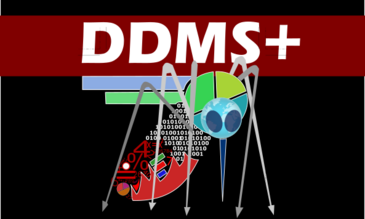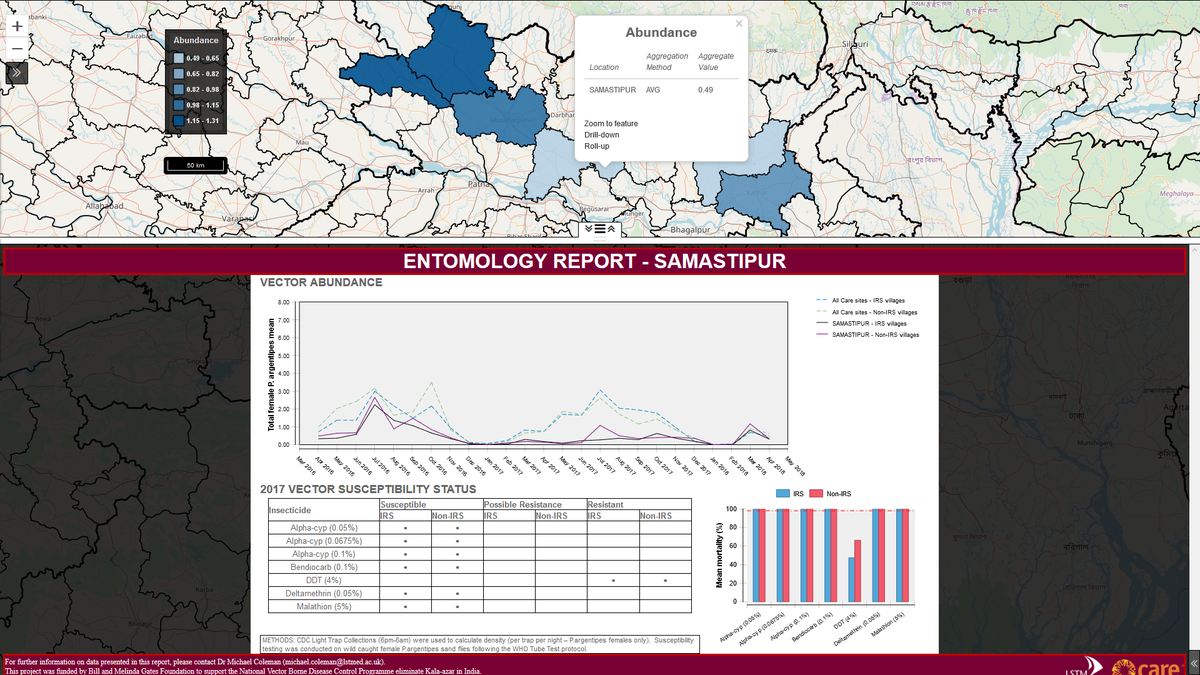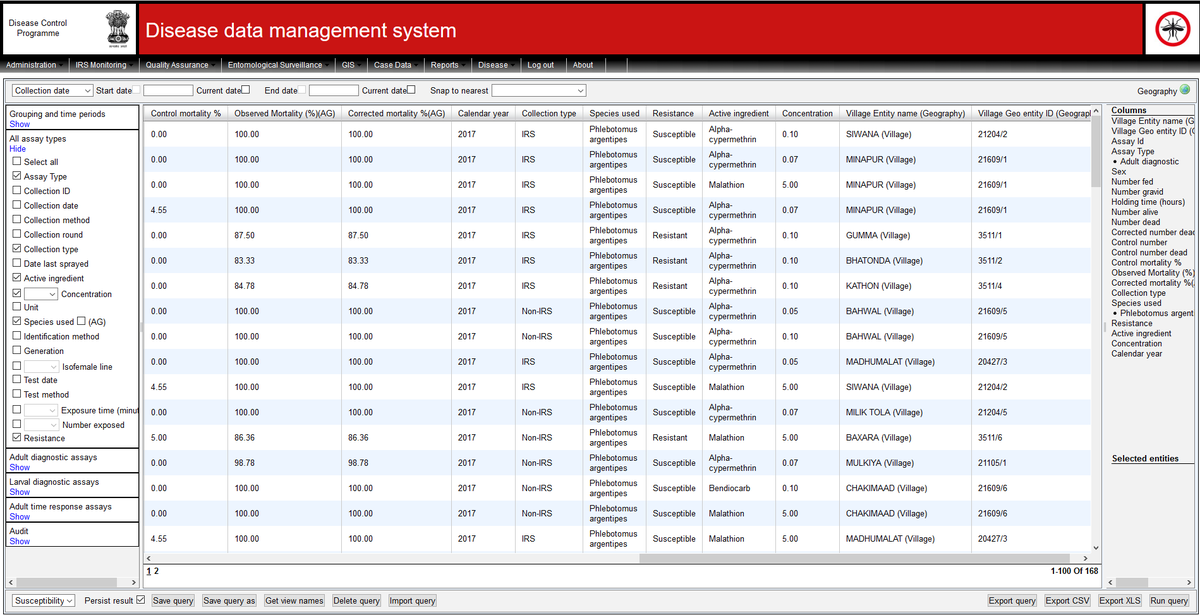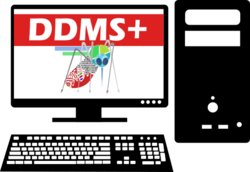
DDMS+ is a database and decision-support tool designed with vector-borne disease control programmes to improve data sharing and utilisation. It’s out-of-the-box functionality handles entomological surveillance, intervention monitoring, case surveillance, and stock control data. It is highly flexible, so any other data type can easily be added to the system through a unique electronic transfer and load system that creates your required database. It is integrated with powerful analytics tools; seamlessly transform data to actionable information, improving the use of data in decision-making. It is also multi-disease, allowing integration across disease control programmes. The DDMS+ can also push data directly into the DHIS2 and is interoperable with most data bases.
Demo SystemClick here to see the DDMS+ in action (Link coming soon)
|
etch@lstmed.ac.ukGet in contact if you would like more information, including training and support requests
|
GIS dashboard (Kaleidoscopes)
DDMS+ features powerful interactive GIS dashboards called kaleidoscopes. A kaleidoscope allows you to thematically map data from multiple saved queries. You can drill down on areas in the map, and the data automatically changes depending on the level you are viewing. Multiple related datasets can be viewed simultaneously, allowing you to quickly evaluate the relationships between datasets. You also have the option of including a linked chart or graph, which dynamically displays data from whatever area of the map is selected.

Reporting
DDMS+ is integrated with BIRT, an open source, industry standard reporting and analytics platform. Reports can be generated as pdf or Word documents, or as interactive web-based dashboards. The flexibility of BIRT allows you to accomplish anything you can imagine, from simple bar charts displaying data from a single query, to interactive multi-query reports that analyse and display relationships between different datasets.
Data import and cleaning tools
DDMS+ has a powerful data import and cleaning wizard. You simply drag and drop a formatted Excel document containing your data, and DDMS+ will evaluate the data types, create a dataset with all the appropriate metadata, a form for data entry, and a query builder all in one go. If there are typos in your data, DDMS+ will clean your data prior to import. The more data you import, the smarter DDMS+ gets.
Query Builders
DDMS+ features a web-based data aggregation tool called the query builder. The query builder allows you to summarise your data across any dimension you like, adding filters and grouping on the fly. Commonly used indicators (like incidence of disease) are already programmed out-of-the-box, and you can add any other custom indicators you like. Commonly used queries can be saved, and the data in them can be used to create maps, reports, and dashboards.

Ontologies
DDMS+ uses standard ontologies such as IDOMAL and MIRO for all the terms used in the system. It not only stores the terms, but the relationship between them, allowing you to build analytics that utilize parent-child relationships. If a new term is added (e.g., a new insecticide or drug) into the ontology it automatically becomes available in the whole system. In addition, the use of standard ontologies encourages interoperability with other systems.
Integration
DDMS+ includes a wizard which allows you to push unique data directly to the DHIS2, the de facto standard health management information system in many countries. In this way key indtcators from entomology, or, interventions could be visualised. During this process, you use the DDMS+ query builder to construct a dataset you would like in the DHIS2. Through the DHIS2 wizard, DDMS+ will then create the DHIS2 dataset and metadata and import the data with a single click. The data can then be used in the standard DHIS2 analytics engine. In addition, through its use of Excel as the format for importing and exporting data, DDMS+ is interoperable with most other databases.
Thresholds and alerts
DDMS+ includes powerful threshold and alert functionality as part of the case surveillance module. Based on historical caseloads from particular geographical areas, DDMS+ will automatically calculate thresholds for each location based on standard algorithms. As new data are entered in the system, DDMS+ will check if any thresholds have been breached. If they have, DDMS+ will send emails or sms messages to the appropriate decision-makers, allowing you to rapidly identify anomalous cases and respond appropriately.


